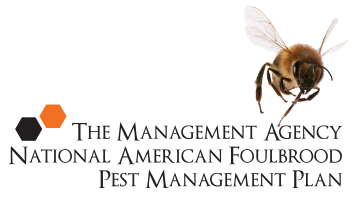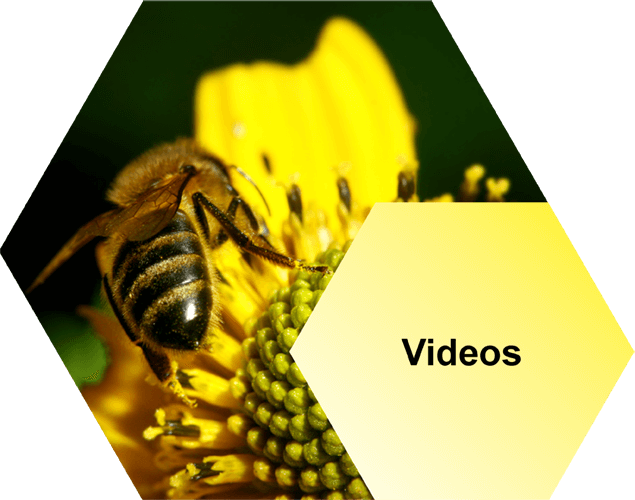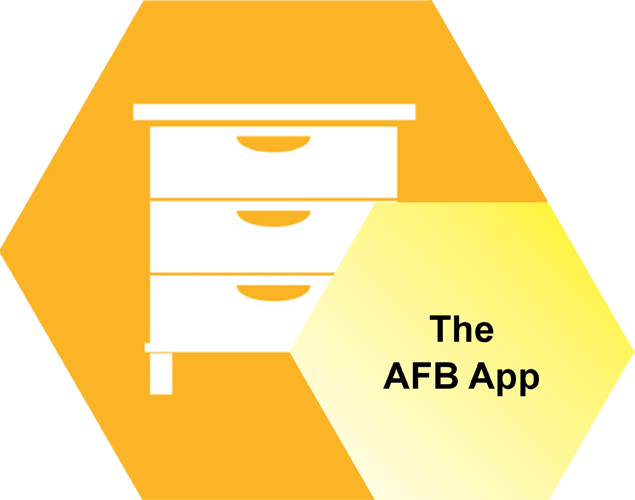Spread of AFB
Control AFB by understanding how it spreads
To be able to control the spread of AFB, it is important to understand how the disease is transferred between colonies. A number of possible means of spread have been suggested by beekeepers. These include:
Extracted honey supers
Transfer of brood frames and honey frames
Empty used comb
Other contaminated hive parts
Robbing
Drift
Queens and package bees
Swarms
Bees wax foundation
Varroa control strips
Beekeeping equipment (gloves, hive tools, honey extractors, etc.)
Flowers and the ground in front of hives
Feeding contaminated honey and pollen
Dispelling myths
In discussing the possible ways that colonies can become infected with AFB, it is important to remember that AFB infections do not occur because a single bacterial spore finds its way into a colony.
In controlled experiments it has been shown that several million spores need to be fed to a honey bee colony in either sugar syrup or honey to infect one or more larvae.
Obviously, large numbers of spores are usually required to initiate an AFB infection. So probably the best way to assess the importance of the various means of spread is to compare their relative ability to transfer large numbers of spores from one colony to another.
Common causes of AFB spread
Beekeeping practice
Unfortunately, by far the most common causes of AFB spread are beekeeping management practices. The most significant of these are:
The movement of extracted honey supers between hives (often a year later)
Transferring brood or honey frames between colonies.
Most of the other causes beekeepers normally blame for the spread of AFB turn out not to be as significant or widespread as beekeeping management practices.
Robbing
Robbing can be an important cause, but when it leads to an AFB infection, it is usually the result of inadequate levels of beehive inspection (i.e. poor beekeeping management practice). Robbing of feral colonies is not a major source of AFB, at least in most situations and areas of New Zealand.
Drift
Although the drift of bees from AFB hives to healthy hives can spread AFB, particularly if the infection is advanced, it is probably not an important factor in the transmission of AFB from lightly infected colonies.
Beekeeping equipment
Such things as hive tools, smokers and gloves, as well as the soil in front of hives, foundation, and queen bees, are of little consequence as sources of spread of the disease.
More information
Possible means of spread of AFB are discussed in greater detail in the sections that follow.
Take the AFB 5 minute quiz
How well do you know what you need to know about AFB and beekeeping? Take our short quiz and find out.
Videos
Our videos cover everything from your legal obligations to how to recognise AFB, collecting cell and bee samples and more.
Symptoms
There’s a lot of good information here, telling you everything you need to know about recognising AFB: the visual symptoms, smell of AFB and more.
Inspection and Diagnosis
Successfully eliminate AFB by telling the difference between symptoms of AFB and other brood diseases in the hive. We tell you the best methods for inspecting your hives.
The Law
New Zealand beekeepers have a number of legal obligations that must be met regarding AFB disease. Read the shortened list in summary, here.
Elimination
Most hives become infected because bees, honey or equipment have been put into a hive from another hive that is infected with AFB. Lower your chances of an AFB infection by reading this section.
AFB Recognition Course Info
Find out when the next AFB Recognition and Competency Courses, or Refresher Courses are available. These are held throughout the year in various New Zealand locations across the South Island and North Island.
The AFB App
Follow the link below to open the App. Once open to save to your device you need to bookmark the URL on your phone so you can find it easily again. Please click here to open.









